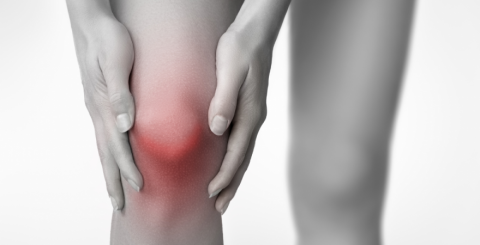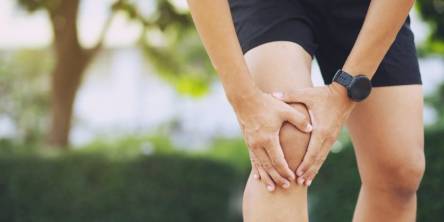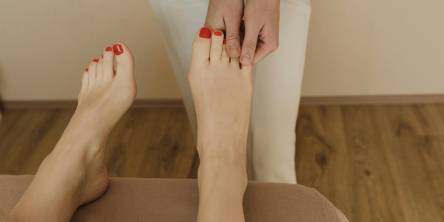From Little Tingles to Full-On Yikes: When to Actually Worry About Knee Pain

Ah, knees. Those underappreciated joints that heroically carry us up stairs, into dance battles, and through every questionable workout decision we make during a fitness phase. But when your knees start speaking in creaks, pops, and tiny electrical zaps that feel like Morse code from inside your body, it might be time to listen. Spoiler: your kneecap isn’t trying to send you good vibes.
So, when does a little discomfort graduate from “Eh, I probably slept weird” to “Maybe I should Google a knee pain doctor who doesn’t work out of their garage”?
Let’s break it down before your next attempt to stand up from the couch feels like an Olympic event.
1. Tingles, Pops, and Other Tiny Alarms
A little crackle when you stand might be nothing—just your joints being dramatic. But if you’re feeling tingling, numbness, or sharp little stabs when you walk, your knee might be giving subtle signs of something deeper, like nerve compression or inflammation. Fun fact: knees aren’t supposed to feel like Pop Rocks.
Don’t ignore repeated tingling. They're like texts from your body saying, “Hey, something’s off—please respond.”
2. Swelling That Turns Your Knee Into a Balloon Animal
Slight puffiness after a hike? Normal. A knee that looks like it’s auditioning for the Macy’s Thanksgiving Parade? Not normal. Swelling, especially when paired with heat, redness, or the uncanny ability to wobble like Jell-O, is a neon sign from your body: “Call a knee pain doctor before things get wild.”
Pro tip: If your pants stop fitting your knee, that’s a problem. Not a fashion statement.
3. Pain That Won’t Quit, Even When You’re Doing Nothing
If your knee pain flares up during intense activity, that’s one thing. But if it hurts when you're watching TV, sitting at your desk, or sleeping (the one activity where you’re supposed to be a limp noodle), it's time to stop blaming your sneakers and start blaming your meniscus, ligaments, or cartilage. Maybe even all three.
The sooner you chat with a knee pain doctor, the sooner you stop waking up in the middle of the night wondering if your patella is plotting against you.
4. Crunchy Noises and That “Loose Screw” Feeling
Knees shouldn’t sound like you’re walking on gravel. And if you get the sensation that something is “slipping,” “clicking,” or just generally feels like it’s not where it’s supposed to be, congrats! Your knee is either starring in its own low-budget horror movie, or it's time to visit someone with an actual medical degree.
And yes, knee pain doctors exist for this exact reason. They’ve heard every weird sound a joint can make—and have actual solutions that don’t involve duct tape and denial.
5. Can’t Bend It Like Beckham Anymore?
Flexibility disappearing faster than your will to attend early morning yoga? If stairs are suddenly your nemesis and squatting to pick something up feels like you’re being tested by ancient gods, you might be dealing with arthritis, a tear, or simple overuse turned not-so-simple.
There’s a difference between being sore and being stuck. If your range of motion is about as limited as a toddler’s patience, call a knee pain doctor before your couch becomes a permanent home.
6. You're Self-Diagnosing with Internet Witchcraft
We get it. You googled “knee pain, sharp stabbing outer side only when turning left after sneezing” and now you're convinced you have a rare condition only seen in Olympic archers. Stop. While online symptom quizzes are great for confirming your worst fears, they’re terrible at providing real help.
If you’ve tried stretching, icing, and talking nicely to your knees and they’re still staging a rebellion, it’s time for a pro. A certified, educated, possibly very kind knee pain doctor who won’t make you feel like a wimp for seeking help.
Final Thoughts:
Whether it’s weird sounds, stubborn swelling, or pain that refuses to be iced into submission, the right knee pain doctor can help you get to the bottom of it—and maybe even get back to doing things you love. Like dancing. Or stairs. Or not groaning every time you stand up.
Similar Articles
Knee pain affects millions of people around the world. It can make daily activities difficult and impact your quality of life. Knee discomfort can be caused by injuries, chronic conditions, or overuse.
If your knees have recently started sounding like a bowl of Rice Krispies (snap, crackle, pop!) every time you stand up, congratulations — you're officially living the adult experience.
Search engine optimization (SEO) may help physical therapists improve their online exposure and drive more visitors to their website.
You're sitting at home with two completely different treatment plans from two doctors you trust.
When conservative therapy fails, surgery may be required to alleviate chronic foot or ankle discomfort.
Your body changes with time - muscles and bones shift, ligaments loosen, and circulation may slow. Unfortunately, the aging process has an impact on our feet as well.
Back problems aren't just discomfort or temporary back pain. Many of them can be extremely dangerous and lead to serious complications if you don't seek medical attention on time.
Sciatica is a condition in which the sciatic nerve, the longest nerve in the human body, becomes irritated or pinched
Irritable bowel syndrome (IBS) is a dysfunction of the gastrointestinal tract that manifests as abdominal pain, bloating, flatulence, and intestinal discomfort (constipation, diarrhea, or a combination of both.









